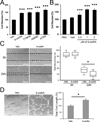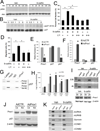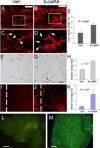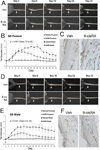9-cis retinoic acid promotes lymphangiogenesis and enhances lymphatic vessel regeneration: therapeutic implications of 9-cis retinoic acid for secondary lymphedema
- PMID: 22275501
- PMCID: PMC3327127
- DOI: 10.1161/CIRCULATIONAHA.111.030296
9-cis retinoic acid promotes lymphangiogenesis and enhances lymphatic vessel regeneration: therapeutic implications of 9-cis retinoic acid for secondary lymphedema
Erratum in
-
Correction. 9-Cis retinoic acid promotes lymphangiogenesis and enhances lymphatic vessel regeneration: therapeutic implications of 9-Cis retinoic acid for secondary lymphedema.Circulation. 2015 Apr 7;131(14):e401-2. doi: 10.1161/CIR.0000000000000200. Circulation. 2015. PMID: 25847986 No abstract available.
Abstract
Background: The lymphatic system plays a key role in tissue fluid homeostasis and lymphatic dysfunction caused by genetic defects, or lymphatic vessel obstruction can cause lymphedema, disfiguring tissue swelling often associated with fibrosis and recurrent infections with no available cures to date. In this study, retinoic acids (RAs) were determined to be a potent therapeutic agent that is immediately applicable to reduce secondary lymphedema.
Methods and results: We report that RAs promote proliferation, migration, and tube formation of cultured lymphatic endothelial cells by activating fibroblast growth factor receptor signaling. Moreover, RAs control the expression of cell-cycle checkpoint regulators such as p27(Kip1), p57(Kip2), and the aurora kinases through both an Akt-mediated nongenomic action and a transcription-dependent genomic action that is mediated by Prox1, a master regulator of lymphatic development. Moreover, 9-cisRA was found to activate in vivo lymphangiogenesis in animals in mouse trachea, Matrigel plug, and cornea pocket assays. Finally, we demonstrate that 9-cisRA can provide a strong therapeutic efficacy in ameliorating experimental mouse tail lymphedema by enhancing lymphatic vessel regeneration.
Conclusion: These in vitro and animal studies demonstrate that 9-cisRA potently activates lymphangiogenesis and promotes lymphatic regeneration in an experimental lymphedema model, presenting it as a promising novel therapeutic agent to treat human lymphedema patients.
Conflict of interest statement
Figures






Comment in
-
Lymphangiogenesis: a potential new therapy for lymphedema?Circulation. 2012 Feb 21;125(7):853-5. doi: 10.1161/CIRCULATIONAHA.111.083477. Epub 2012 Jan 24. Circulation. 2012. PMID: 22275500 Free PMC article. No abstract available.
Similar articles
-
Interleukin-8 reduces post-surgical lymphedema formation by promoting lymphatic vessel regeneration.Angiogenesis. 2013 Jan;16(1):29-44. doi: 10.1007/s10456-012-9297-6. Epub 2012 Sep 4. Angiogenesis. 2013. PMID: 22945845 Free PMC article.
-
Small Peptide Modulation of Fibroblast Growth Factor Receptor 3-Dependent Postnatal Lymphangiogenesis.Lymphat Res Biol. 2019 Feb;17(1):19-29. doi: 10.1089/lrb.2018.0035. Epub 2019 Jan 16. Lymphat Res Biol. 2019. PMID: 30648916 Free PMC article.
-
Lymphatic endothelial cell RXRα is critical for 9-cis-retinoic acid-mediated lymphangiogenesis and prevention of secondary lymphedema.FASEB J. 2023 Jan;37(1):e22674. doi: 10.1096/fj.202200146RR. FASEB J. 2023. PMID: 36520015
-
Engineering the Lymphatic Network: A Solution to Lymphedema.Adv Healthc Mater. 2021 Mar;10(6):e2001537. doi: 10.1002/adhm.202001537. Epub 2021 Jan 27. Adv Healthc Mater. 2021. PMID: 33502814 Free PMC article. Review.
-
Lymphedema and therapeutic lymphangiogenesis.Biomed Res Int. 2013;2013:804675. doi: 10.1155/2013/804675. Epub 2013 Oct 9. Biomed Res Int. 2013. PMID: 24222916 Free PMC article. Review.
Cited by
-
Dysregulation of Lymphatic Endothelial VEGFR3 Signaling in Disease.Cells. 2023 Dec 28;13(1):68. doi: 10.3390/cells13010068. Cells. 2023. PMID: 38201272 Free PMC article. Review.
-
Lymphatic Tissue Bioengineering for the Treatment of Postsurgical Lymphedema.Bioengineering (Basel). 2022 Apr 6;9(4):162. doi: 10.3390/bioengineering9040162. Bioengineering (Basel). 2022. PMID: 35447722 Free PMC article. Review.
-
Breaking a Vicious Circle: Lymphangiogenesis as a New Therapeutic Target in Wound Healing.Biomedicines. 2023 Feb 21;11(3):656. doi: 10.3390/biomedicines11030656. Biomedicines. 2023. PMID: 36979635 Free PMC article. Review.
-
Investigation into the genetics of fetal congenital lymphatic anomalies.Prenat Diagn. 2023 Jun;43(6):703-716. doi: 10.1002/pd.6345. Epub 2023 Apr 3. Prenat Diagn. 2023. PMID: 36959127 Free PMC article.
-
Quantification of Lymphangiogenesis in the Murine Lymphedema Tail Model Using Intravital Microscopy.Lymphat Res Biol. 2024 Jun;22(3):195-202. doi: 10.1089/lrb.2023.0048. Epub 2024 May 3. Lymphat Res Biol. 2024. PMID: 38699876 Free PMC article.
References
-
- Wigle JT, Oliver G. Prox1 function is required for the development of the murine lymphatic system. Cell. 1999;98:769–778. - PubMed
-
- Lahteenvuo M, Honkonen K, Tervala T, Tammela T, Suominen E, Lahteenvuo J, Kholova I, Alitalo K, Yla-Herttuala S, Saaristo A. Growth factor therapy and autologous lymph node transfer in lymphedema. Circulation. 2011;123:613–620. - PubMed
-
- Tammela T, Saaristo A, Holopainen T, Lyytikka J, Kotronen A, Pitkonen M, Abo-Ramadan U, Yla-Herttuala S, Petrova TV, Alitalo K. Therapeutic differentiation and maturation of lymphatic vessels after lymph node dissection and transplantation. Nat Med. 2007;13:1458–1466. - PubMed
-
- Szanto A, Narkar V, Shen Q, Uray IP, Davies PJ, Nagy L. Retinoid x receptors: X-ploring their (patho)physiological functions. Cell Death Differ. 2004;11 Suppl 2:S126–S143. - PubMed
Publication types
MeSH terms
Substances
Grants and funding
LinkOut - more resources
Full Text Sources
Other Literature Sources
Medical
Miscellaneous

